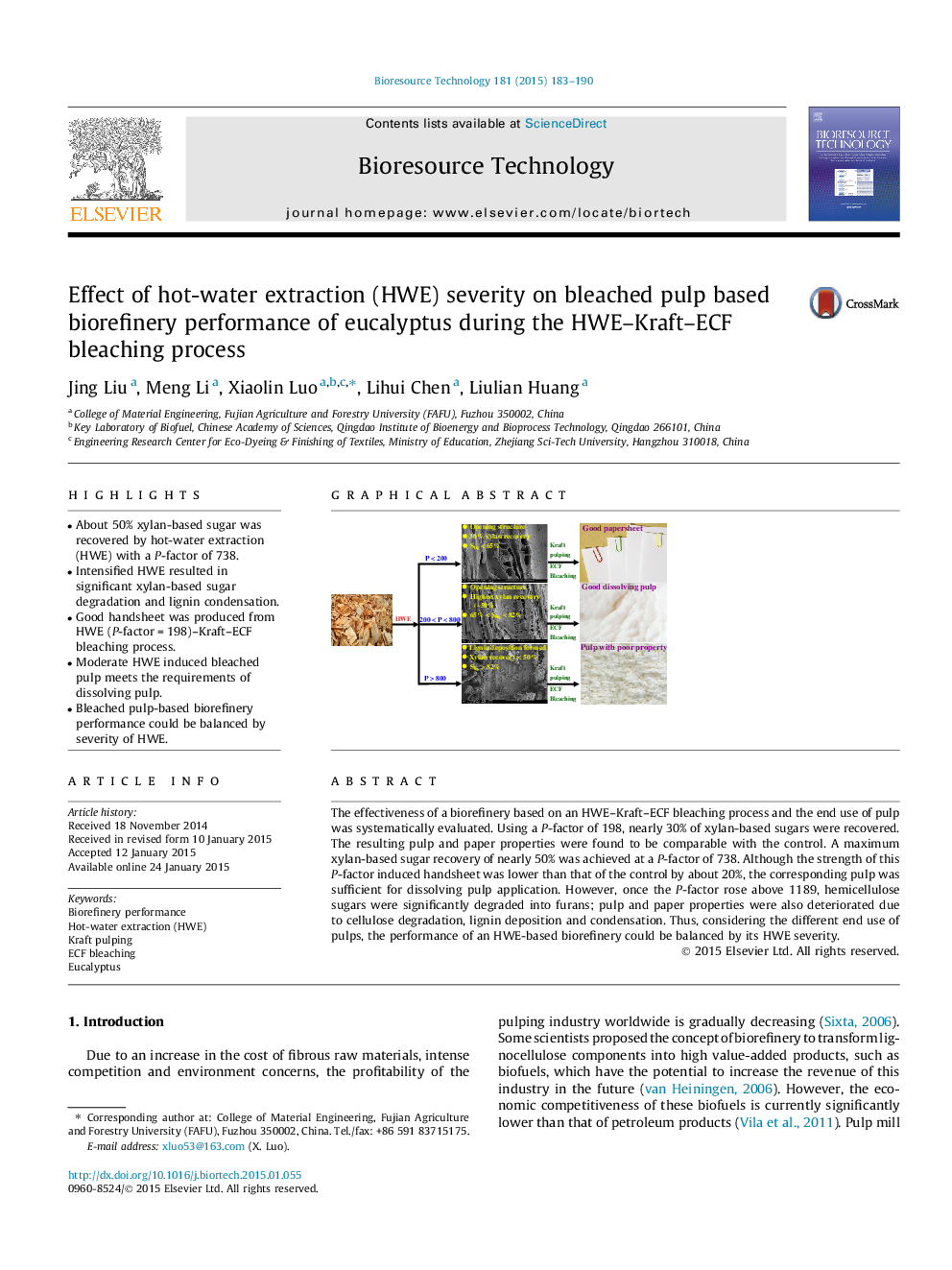| Article ID | Journal | Published Year | Pages | File Type |
|---|---|---|---|---|
| 680105 | Bioresource Technology | 2015 | 8 Pages |
•About 50% xylan-based sugar was recovered by hot-water extraction (HWE) with a P-factor of 738.•Intensified HWE resulted in significant xylan-based sugar degradation and lignin condensation.•Good handsheet was produced from HWE (P-factor = 198)–Kraft–ECF bleaching process.•Moderate HWE induced bleached pulp meets the requirements of dissolving pulp.•Bleached pulp-based biorefinery performance could be balanced by severity of HWE.
The effectiveness of a biorefinery based on an HWE–Kraft–ECF bleaching process and the end use of pulp was systematically evaluated. Using a P-factor of 198, nearly 30% of xylan-based sugars were recovered. The resulting pulp and paper properties were found to be comparable with the control. A maximum xylan-based sugar recovery of nearly 50% was achieved at a P-factor of 738. Although the strength of this P-factor induced handsheet was lower than that of the control by about 20%, the corresponding pulp was sufficient for dissolving pulp application. However, once the P-factor rose above 1189, hemicellulose sugars were significantly degraded into furans; pulp and paper properties were also deteriorated due to cellulose degradation, lignin deposition and condensation. Thus, considering the different end use of pulps, the performance of an HWE-based biorefinery could be balanced by its HWE severity.
Graphical abstractFigure optionsDownload full-size imageDownload as PowerPoint slide
